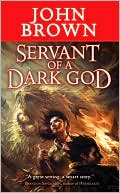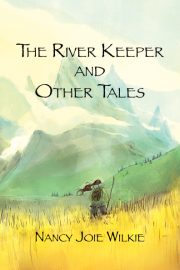Key Conditions for Suspense:
Part 12 – Make the problem hard to solve with conflict
by John D. Brown
 The following is part of a continuing series. If you wish to start at the beginning, head to It’s All About The Reader.
The following is part of a continuing series. If you wish to start at the beginning, head to It’s All About The Reader.
Readers want to feel their suspense–their worry and anxiety for a character–build. In the last two posts, I discussed the idea that they will feel that rising suspense if we make the problem hard to solve. I then listed four types of things that make the problem hard to solve—disadvantages, conflicts, growing troubles, and surprise. In this post I’ll discuss conflicts, which are simply people and things that actively work against or resist our character as he or she tries to solve the story problem.
Again, remember: these aren’t ingredients to a recipe. They’re options. Things to spark your imagination. You don’t need to think up something for every category. You just need enough to bring the problem to life.
Conflict with the opposition
Your character will have points of conflict with the opposition. That’s a given. The smarter and more powerful the opposition, the harder the problem is to solve, the more the reader can worry, and the bigger the triumph at the end. So you want to make your opposition character and team a real threat.
The best way I’ve found to do this is to play the story as one-man chess, thinking not just about the hero, but about the opposition as well. The hero is, for the opposition, a problem. And so I’ve found it very productive to develop the opposition’s goal, motives, and plan. So the hero makes a move, then I turn the table and ask: what cunning/smart/scary reactions might this opposition character have to what the hero just did? Back and forth I go, letting both characters act with as much intelligence and cunning as they possess.
Remember, the better the opposition, the more tension the reader will feel because a formidable opponent increases the chances in the reader’s mind that the hero will fail.
Conflict with the other good guys
Sometimes we think only about the opposition, but the other good guys can provide many delicious conflicts. In fact, if you think about casting variety, this is just an extension of that topic.
So maybe the hero is about to break a moral code some of the other good guys won’t, or vice versa.
Maybe a key player on the team just can’t stand the risk.
Maybe one of the good guys has lost the vision and turned traitor, as Cypher did in The Matrix.
Maybe the good guys have different reasons for being on the team. One guy joins the army because the judge told him he could join the army or join the convicts in the big house. Another guy joins because he feels a duty and all of the men in his family have served since the Civil War. Maybe another guy joined because he felt like this was the only way to prove to himself he wasn’t a coward.
Maybe the hero is teamed with someone that is a complete opposite. The hero’s a neat freak, the partner is a slob. The hero is highly-educated, but his right hand man barely got his GED. Maybe one of the team members is a KKK sympathizer, and another one is black.
As with the opposition, the key here is taking a moment to ask what points of conflict the good guys might have with our hero and then explore the individual goals, motives, and plans behind those conflicts.
Conflict with bit characters
After looking at the main characters in the story who have goals and plans that conflict with the hero’s, you might want to see if there are any bit characters who might provide points of conflict.
Maybe the hero drives into some bad neighborhood to try to get information from a witness. When the hero comes out from her meeting, she finds her car stolen.
Maybe in one scene the bad guys start shooting at a playground. The hero rushes them, but a mother who is trying to get her son off the swing gets in his way.
Maybe the hero needs information, but the guy working security has a mortgage in default and can’t lose his job.
Maybe our hero is trying to get away and a vigilante truck driver hears the chatter over the police channel and decides to help.
Think about the other people that might in the scenes and what conflicts they might pose. If one is too delicious not to use it, put it in.
Conflict with the setting
The setting includes everything that’s not a character with some part—geography, technology, culture, religion, government, etc.
Maybe the hero wants to stop the two men carrying his little boy off, but there’s a river raging between him and them.
Maybe the hero wants to get back to camp, but the temperature drops and drops and drops as in Jack London’s “To Build A Fire.”
Maybe the hero encounter asteroids, trains that are late, horses that are high-spirited, and insects carrying malaria.
Maybe a hurricane is coming in and making it rough for our brave gal to go out to sea to save her husband whose boat is swamped.
Look around in your setting and see what things might provide obstacles to your character.
Conflict with self
The last, and sometimes the most powerful, type of conflict is a character’s conflict with herself or himself. This type of conflict arises when a character wants two things that seem to be mutually exclusive.
For example, maybe the hero wants to marry the girl of his dreams.
“I love you, Luke”
“But you’re my sister, Leia.”
He wants that intimate relationship; we as the audience want it for him, but we also want him to avoid the freak zone. We can’t do both. Unless . . .
“But,” Leia says, “I take birth control.”
Zoiks! Run, Luke, run!
Maybe, like Katniss in Hunger Games, the heroine wants to live, but in order to do that she has to kill a boy who has been nothing but kind to her family. She wants to survive and be kind. She can’t do both.
Maybe like John Proctor in The Crucible the hero can keep his honor only if he dies. He wants his honor. He wants to be a good man. But he also wants to live. He can’t have both.
Maybe like Bob in The Incredibles, the hero wants to escape a life of drudgery, but he also wants to keep his family safe. Alas, he can’t have both.
Have you noticed how many love stories pit someone’s desire for independence against his or her desire for love? It’s simply hard to solve a problem when doing so means you must give up something else of great worth.
When developing your story, take some time to explore potential conflicts inside the main character. You don’t have to include these types of conflicts in every story, but when you come up with a good one, it’s such a lovely way to put your hero and readers through the wringer.
And that wraps up my discussion of conflict. In the next post, I’ll discuss the last two types of things you can do to make the character’s problem hard to solve and build the reader’s suspense.
Happiness,
John
•••
 John Brown is an award-winning novelist and short story writer. Servant of a Dark God, the first book in his epic fantasy series, was published by Tor Books and is now out in paperback. Forthcoming novels in the series include Curse of a Dark God and Dark God’s Glory. He currently lives with his wife and four daughters in the hinterlands of Utah where one encounters much fresh air, many good-hearted ranchers, and an occasional wolf.
John Brown is an award-winning novelist and short story writer. Servant of a Dark God, the first book in his epic fantasy series, was published by Tor Books and is now out in paperback. Forthcoming novels in the series include Curse of a Dark God and Dark God’s Glory. He currently lives with his wife and four daughters in the hinterlands of Utah where one encounters much fresh air, many good-hearted ranchers, and an occasional wolf.
For a list of all of the posts in this series thus far, click on the “John D. Brown” tag.


